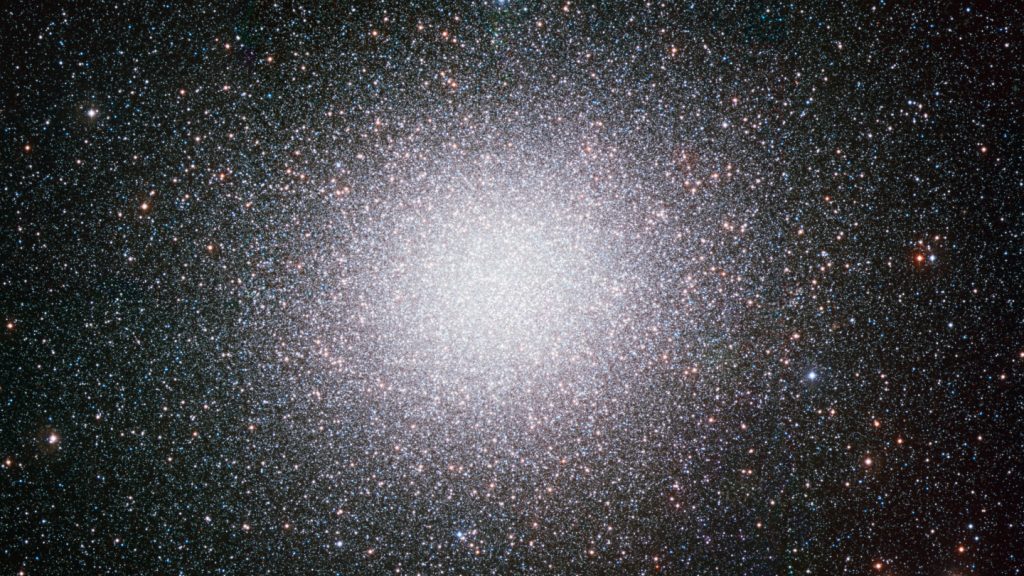A new study has found no evidence of an intermediate-mass black hole in Omega Centauri, the Milky Way’s most massive and luminous globular star cluster. The study suggests that a collection of smaller stellar-mass black holes within the star cluster can explain the movement and distribution of its ancient stars. Researchers estimated that there are between 10,000 to 20,000 stellar-mass black holes, totaling between 200,000 and 300,000 times the mass of the sun, found clustered around the center of Omega Centauri.
The study doesn’t completely rule out the presence of an intermediate-mass black hole, but it suggests that if one exists, it is much smaller than previously believed. The team found no black hole with a mass greater than 6,000 times the mass of the sun within the star cluster. These findings provide new insights into the understanding of black hole evolution and the distribution of mass within Omega Centauri.
The alternative theory proposed by the new study contrasts with the previous findings of another research team that identified seven stars near the cluster’s center moving at high speeds, suggesting the presence of a black hole between 8,200 and 50,000 solar masses. The search for intermediate-mass black holes is crucial in understanding the processes of black hole evolution.
The recent study analyzed the motion of ordinary stars and millisecond pulsars within Omega Centauri to determine the distribution of mass throughout the star cluster. Millisecond pulsars emit radio pulses at rapid rates, providing precise information on their velocity and acceleration. This data, along with the movement of stars, helped the researchers reach their conclusions about the mass distribution within Omega Centauri.
Astronomers remain divided on the existence of an intermediate-mass black hole within Omega Centauri. While some consider the evidence for its presence compelling, others argue in favor of the smaller stellar-mass black holes. The controversy surrounding the existence of the intermediate-mass black hole could potentially be resolved by obtaining concrete proof such as observing star orbits around the invisible object or detecting gas falling into the supposed black hole.
To settle the debate, astronomers suggest obtaining direct observational evidence through star orbits or gas accretion. Further research and observations will be needed to conclusively determine the presence of an intermediate-mass black hole within Omega Centauri. The contrasting viewpoints of scientists highlight the complexities and challenges associated with studying black holes and their environments.















